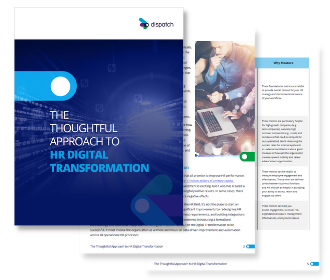Client
Our client is a large and sophisticated North American oil producer.
Background
The client uses Workday as their core HR information system. Their IT team provides a broad array of services to the organization, including supporting employee lifecycle events – from onboarding to offboarding. Historically, they used ServiceNow for ticket management and elected to transition to Freshservice, a better fit for their service model.
Challenge
Workday is the system of truth for key employee information needed for several business processes serviced by the IT organization. Our client asked us to build an integration between Workday and Freshservice to ensure employee data was incorporated into service requests. Their previous solution with ServiceNow was brittle and caused a lot of errors. This integration had to be robust and secure to ensure the efficiency of the IT organization and to optimize the employee and manager experience for service requests.
Solution
Dispatch worked with the client team to map the business processes in scope. In general, an appropriate ticket needed to be raised in Freshservice whenever a relevant change on a worker’s profile was generated in Workday. There were dozens of “reason-codes” established for each type of service, and each reason-code was based on the type of change and impacted business process.
Some transactions were sensitive (such as during terminations), and in these cases, data needed to be suppressed to protect confidentiality. Sometimes transactions needed to be rescinded, triggering new tickets to alert the help desk to the change.
In several cases, transactions needed to be detected well in advance of the actual event (such as during hiring and on-boarding processes) to ensure adequate lead-time for the service desk to address the requests.
This integration was built in Workday Studio, along with Workday’s Core Connector functionality.
Outcome
The outcome of this project is a stable and error-resistant integration that has significantly improved the efficiency of IT services and reduced the amount of manual administration needed to service employee changes.

